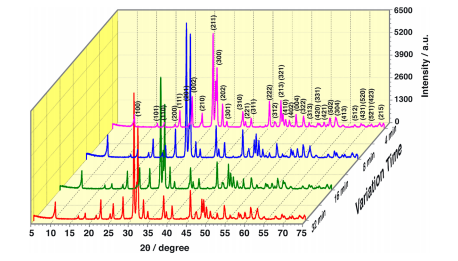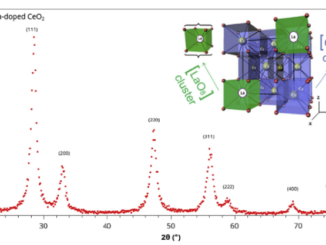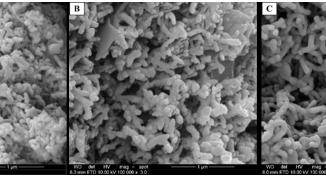
Computational Chemistry Meets Experiments for Explaining the Geometry, Electronic Structure, and Optical Properties of Ca10V6O25
Abstract: In this paper, we present a combined experimental and theoretical study to disclose, for the first time, the structural, electronic, and optical properties of Ca10V6O25 crystals. The microwave -assisted hydrothermal (MAH) method has been employed to synthesize these crystals with different morphologies, within a short reaction time at 120 degrees C. First-principle quantum mechanical calculations have been performed at the density functional theory level to obtain the geometry and electronic properties of Ca10V6O25 crystal in the fundamental and excited electronic states (singlet and triplet). These results, combined with the measurements of X-ray diffraction (XRD) and Rietveld refinements, confirm that the building blocks lattice of the Ca10V6O25 crystals consist of three types of distorted 6-fold coordination [CaO6] clusters: octahedral, prism and pentagonal pyramidal, and distorted tetrahedral [VO4] clusters. Theoretical and experimental results on the structure and vibrational frequencies are in agreement. Thus, it was possible to assign the Raman modes for the Ca10V6O25 superstructure, which will allow us to show the structure of the unit cell of the material, as well as the coordination of the Ca and V atoms. This also allowed us to understand the charge transfer process that happens in the singlet state (s) and the excited states, singlet (s*) and triplet (t*), generating the photoluminescence emissions of the Ca10V6O25 crystals.
Author(s): Teixeira, MM; de Oliveira, RC; Oliveira, MC; Ribeiro, RAP; de Lazaro, SR; Li, MS; Chiquito, AJ; Gracia, L; Andres, J; Longo, E
INORGANIC CHEMISTRY
Volume: 57 Pages: 15489-15499 Published: DEC 17 2018
DOI: 10.1021/acs.inorgchem.8b02807




